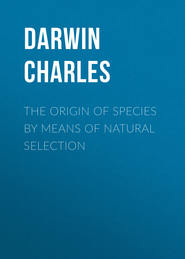По всем вопросам обращайтесь на: info@litportal.ru
(©) 2003-2024.
✖
Insectivorous Plants
Настройки чтения
Размер шрифта
Высота строк
Поля
68
Sachs, 'Trait de Bot.,' 3rd edit. 1874, p. 1026.
69
The distinction between true absorption and mere permeation, or imbibition, is by no means clearly understood: see Mller's 'Physiology,' Eng. translat. 1838, vol. i. p. 280.
70
In the case of Saxifraga tridactylites, Mr. Druce says ('Pharmaceutical Journal, ' May 1875) that he examined some dozens of plants, and in almost every instance remnants of insects adhered to the leaves. So it is, as I hear from a friend, with this plant in Ireland.
71
'Comptes rendus,' June 15, 1874. A good abstract of this paper is given in the 'Gardener's Chronicle,' July 11, 1874.
72
My son Francis counted the hairs on a space measured by means of a micrometer, and found that there were 35,336 on a square inch of the upper surface of a leaf, and 30,035 on the lower surface; that is, in about the proportion of 100 on the upper to 85 on the lower surface. On a square inch of both surfaces there were 65,371 hairs. A moderately fine plant bearing twelve leaves (the larger ones being a little more than 2 inches in diameter) was now selected, and the area of all the leaves, together with their foot-stalks (the flower-stems not being included), was found by a planimeter to be 39.285 square inches; so that the area of both surfaces was 78.57 square inches. Thus the plant (excluding the flower-stems) must have borne the astonishing number of 2,568,099 glandular hairs. The hairs were counted late in the autumn, and by the following spring (May) the leaves of some other plants of the same lot were found to be from one-third to one-fourth broader and longer than they were before; so that no doubt the glandular hairs had increased in number, and probably now much exceeded three millions.
73
Fritz Mller, 'Facts for Darwin, ' Eng. trans. 1869, p. 139. The rhizocephalous crustaceans are allied to the cirripedes. It is hardly possible to imagine a greater difference than that between an animal with prehensile limbs, a well-constructed mouth and alimentary canal, and one destitute of all these organs and feeding by absorption through branching root-like processes. If one rare cirripede, the Anelasma squalicola, had become extinct, it would have been very difficult to conjecture how so enormous a change could have been gradually effected. But, as Fritz Mller remarks, we have in Anelasma an animal in an almost exactly intermediate condition, for it has root-like processes embedded in the skin of the shark on which it is parasitic, and its prehensile cirri and mouth (as described in my monograph on the Lepadidae, 'Ray Soc.' 1851, p. 169) are in a most feeble and almost rudimentary condition. Dr. R. Kossmann has given a very interesting discussion on this subject in his 'Suctoria and Lepadidae,' 1873. See also, Dr. Dohrn, 'Der Ursprung der Wirbelthiere,' 1875, p. 77.
74
Sachs, 'Trait de Botanique' 3rd edit. 1874, p. 1026.
Dr. Warming 'Sur la Diffrence entres les Trichomes,' Copenhague, 1873, p. 6. 'Extrait des Videnskabelige Meddelelser de la Soc. d'Hist. nat. de Copenhague,' Nos. 10-12, 1872.
75
'Trait de Botanique' 3rd edit. 1874, p. 844. See also for following facts pp. 64, 76, 828, 831.
Since this sentence was written, I have received a paper by Gorup-Besanez ('Berichte der Deutschen Chem. Gesellschaft,' Berlin, 1874, p. 1478), who, with the aid of Dr. H. Will, has actually made the discovery that the seeds of the vetch contain a ferment, which, when extracted by glycerine, dissolves albuminous substances, such as fibrin, and converts them into true peptones.
76
See the abstract of his memoir on the contractile tissues of plants, in the 'Annals and Mag. of Nat. Hist.' 3rd series, vol. xi. p. 188.)
77
'English Botany,' by Sir J.E. Smith; with coloured figures by J.
78
The 'Quart. Mag. of the High Wycombe Nat. Hist. Soc.' July 1868, p. 5. Delpino ('Ult. Osservaz. sulla Dicogamia,' &c. 1868-1869, p. 16) also quotes Crouan as having found (1858) crustaceans within the bladders of Utricularia vulgaris.
I am much indebted to the Rev. H.M. Wilkinson, of Bistern, for having sent me several fine lots of this species from the New Forest. Mr. Ralfs was also so kind as to send me living plants of the same species from near Penzance in Cornwall.
79
'Beitrage zur Biologie der Plflanzen' drittes Heft, 1875.
80
I infer that this is the case from a drawing of a seedling given by Dr. Warming in his paper, "Bidrag til Kundskaben om Lentibulariaceae," from the 'Videnskabelige Meddelelser,' Copenhagen, 1874, Nos. 3-7, pp. 33-58.)
81
'New York Tribune,' reprinted in the 'Gard. Chron.' 1875, p. 303.
82
Prof. Oliver has figured a plant of Utricularia Jamesoniana ('Proc. Linn. Soc.' vol. iv. p. 169) having entire leaves and rhizomes, like those of our present species; but the margins of the terminal halves of some of the leaves are converted into bladders. This fact clearly indicates that the bladders on the rhizomes of the present and following species are modified segments of the leaf; and they are thus brought into accordance with the bladders attached to the divided and floating leaves of the aquatic species.
83
Prof. Oliver has given ('Proc. Linn. Soc.' vol. iv. p. 169) figures of the bladders of two South American species, namely Utricularia Jamesoniana and peltata; but he does not appear to have paid particular attention to these organs.
'Travels in the Interior of Brazil, 1836-41,' p. 527.
84
'Proc. Linn. Soc.' vol. iv. p. 171.
85
"Bidrag til Kundskaben om Lentibulariaceae," Copenhagen 1874.















